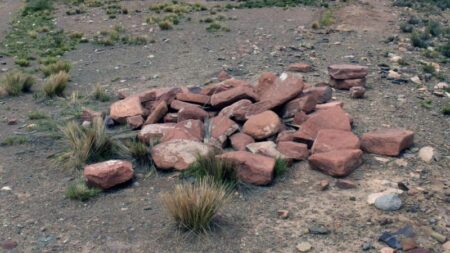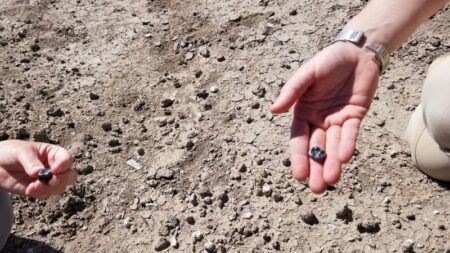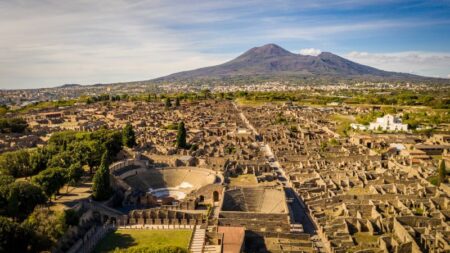In a significant event that has piqued worldwide interest, a rare meteorite from Mars has become a centerpiece of legal and ethical discussions following its recent auction. Touted as the largest piece of Mars on Earth, the Martian meteorite known as NWA 16788 fetched an astonishing $5.3 million at a Sotheby’s auction in New York, held on July 16, 2023. The involved participants in the sale included an anonymous bidder, raising eyebrows about the implications of such transactions for the country of origin—Niger, in West Africa.
In response to the auction’s outcome, the Nigerien government has initiated a formal investigation into the circumstances surrounding the sale, categorizing it as potentially tantamount to “illicit international trafficking.” The government’s inquiry reflects concerns regarding the legal frameworks governing the export of meteorites, particularly in light of the fact that Niger currently lacks specific legislation governing the ownership and sale of such space rocks.
The NWA 16788 meteorite, which weighs approximately 54 pounds (24.5 kilograms), emerged from the Agadez region of Niger, known for its rugged, arid landscapes. Discovered by a meteorite hunter in November 2023, it represents a significant anomaly among Martian meteorites, which are generally much smaller. The acquisition of the meteorite has been described as controversial, with Niger asserting a pressing need to better understand the legalities of its sale.
An investigation has been set into motion by multiple ministries within the Nigerien government, including those overseeing mines, security, higher education, and justice. The objective is to uncover the details surrounding the meteorite’s discovery and subsequent sale, although key players—both the seller and buyer—remain unidentified at this stage. In contrast, Morocco has established legal frameworks that allow meteorite hunters to collect and export their finds, contingent upon necessary permits and reporting requirements regarding the meteorite’s specifics.
Sotheby’s has defended its conduct in the case of NWA 16788, claiming that the meteorite was exported in alignment with all relevant international protocols. The auction house stated that comprehensive documentation was in place throughout the meteorite’s journey and that they are currently scrutinizing the claims raised by the Nigerien authorities. This situation exemplifies the broader question of international ownership of meteorites, an intricately complicated issue addressed in various studies, including a pertinent article featured in the journal Heritage.
The NWA 16788 meteorite itself, which has likely been ejected from the Martian surface as a result of ancient impacts from asteroids or comets, is significant both scientifically and commercially. With only about 400 Martian meteorites known to exist on Earth, they are considered invaluable cosmic time capsules, offering a rare glimpse into the history of the solar system and the makeup of planets, particularly Mars. Sotheby’s notes that this particular meteorite is approximately 70% larger than other prominent Martian meteorites, showcasing features such as a glassy crust formed during its transit through Earth’s atmosphere.
Prior to its auction, NWA 16788 was exhibited at the Italian Space Agency in Rome and was also part of a private collection in Italy; slices of the meteorite reside at the University of Florence. This emphasizes the importance of public institutions in the preservation and study of such invaluable pieces of cosmic history, contrasting them with private collections that have become increasingly prevalent in recent years.
The issue of ownership and accessibility of Martian meteorites is complex. While private ownership is permissible in many jurisdictions, it coexists with growing calls for recognition of their scientific and cultural importance. The balance between public access for educational and research purposes and private collecting remains a contentious challenge for scientists, policymakers, and enthusiasts alike.
In summary, the auction of NWA 16788 has opened up significant discourse around the complexities of meteorite ownership and legalities of their export. The Nigerien investigation represents an essential step toward defining clearer guidelines in the future, while highlighting the intersections between science, commerce, and international law. As the evaluation unfolds, both the scientific community and the general public will be watching closely to see how this issue progresses.












